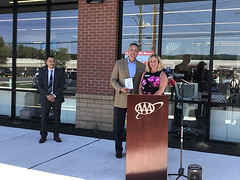
More about the Fredericksburg Air Conditioning Installation
by
Richard Morrisson
One way to maintain a benign environment is to install air conditioning system incorporating pollution controllers and humidifiers. The main function of the air conditioning system is to change the temperature of the air the room. Today there are various kinds of air conditioning systems are available on the market which comes with energy efficient features, different sizes, colors and at different prices. However, it is important to consider a lot of factors before buying an air conditioning. It is important to buy the right size of air conditioning system which is suitable for that region, climate, house, space and size of the room. Installing AC or air conditioning system is not a simple task since it involves a lot of complicated procedures and tools. Most of the people might have a wrong idea of hiring in experienced or non professional for the Fredericksburg Air Conditioning Installation. However, this is very wrong as the project could get ruined or the customer might face the problem again and again with their air conditioning system. There are a lot of advantages of hiring a professional Fredericksburg Air Conditioning Installation company.
[youtube]http://www.youtube.com/watch?v=PutYcMbnX0s[/youtube]
Heating, air-conditioning, and refrigeration in stallers and mechanics are proficient at using a variety of equipments, including wrenches, hammers, metal snips, pipe cutters, benders and electric drills, acetylene torches and mea surement gauges, to work with air ducts and refrigerant lines. They use manometers, thermometers, voltmeters, pressure gauges, and other testing tools and instruments to check re frigerant pressure, airflow, burners, electrical circuits, and other elements or components.
Other craft workers at times repair or install heat ing and cooling systems. For instance, on a huge Fredericksburg Air Conditioning Installation job, particularly where professionals are covered by union agreements, ductwork may be performed by duct installers and sheet metal workers; electrical task by the experienced electricians; and installation of condens ers, piping and other components by plumbers, pipe layers, steamfitters and pipefitters. Home electrical device repairers generally service household refrigerators and room air- conditioners. Professional air-conditioning, refrigeration and heating Fredericksburg Air Conditioning Installation companies work in homes, stores of all types, office buildings, factories and hospitals anywhere there is climate-control device. They might be assigned in order to precise jobsites at the starting of each day or if they are making service calls, they might be dispatched to jobs by telephone, radio mails or online. More and more, people are using cell phones in order to coordinate technicians\’ schedules. This is why one should always hire a professional and reputed air conditioning repair service company which provides services at reasonable rates.
The author is a specialist in writing about Geothermal Heat Pump Fredericksburg like. He has written many popular articles on several websites related to Fredericksburg Air Conditioning Installation like. He would love to grab your feedback about articles written by him.
Article Source:
ArticleRich.com

